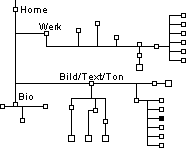|
|
Anna Oppermann: Text im Ensemble und Funktion des Fotos in der Methode
 I. in: Kunstforum International Band 33, 3/79, S. 218 (auch abgedruckt in Katalog: Anna Oppermann Ensembles 1968 bis 1984, Hamburg und Brüssel 1984, S. 64-65 I. in: Kunstforum International Band 33, 3/79, S. 218 (auch abgedruckt in Katalog: Anna Oppermann Ensembles 1968 bis 1984, Hamburg und Brüssel 1984, S. 64-65 *) *)
 II. English translation II. English translation
|
|
